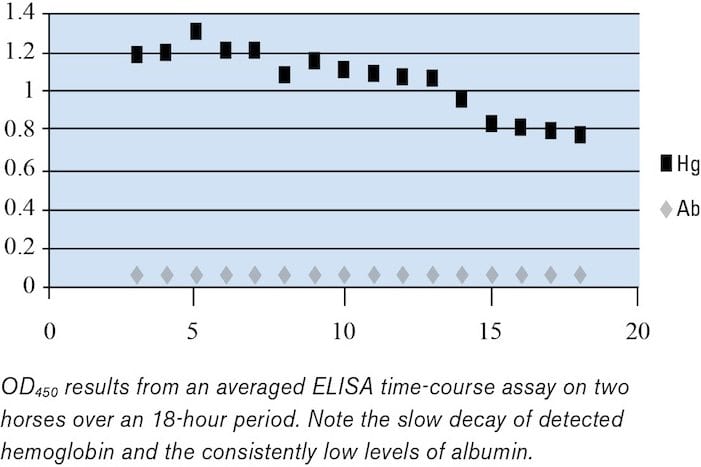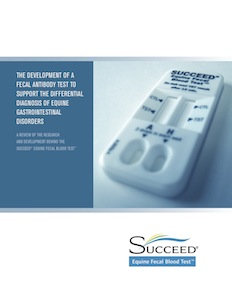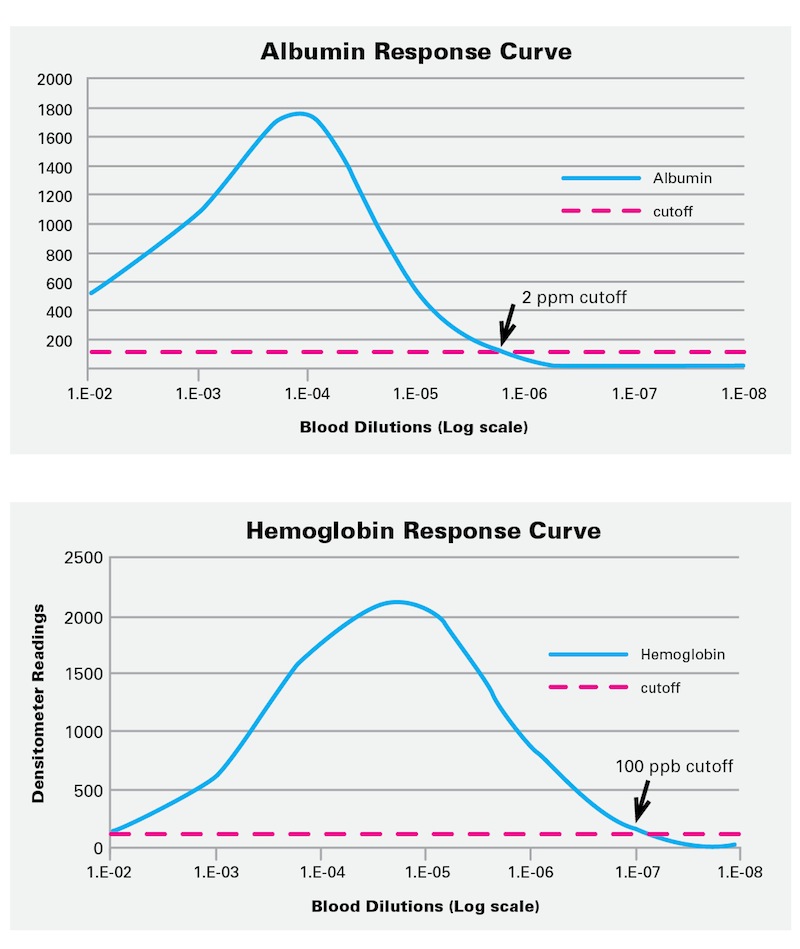The SUCCEED Equine Fecal Blood Test is a highly accurate and sensitive diagnostic aid that can help practitioners differentiate gastric from colonic sources of bleeding that reflect ulcers, inflammation and related digestive tract pathologies. The kit is a two-part field test that is easy to employ and provides results in minutes.
Learn more about the development of and testing behind the SUCCEED Equine Fecal Blood Test, a fecal antibody test to support the differential diagnosis of gastrointestinal disorders in horses.
In Vitro Response Curves
The accuracy of the SUCCEED FBT is validated by serial dilutions of horse blood, typically in powers of ten.
There are two wells in the kit, one to detect albumin and one for hemoglobin. In water, the sensitivity of the test is 2 parts per million (ppm) for albumin and 0.1 ppm for hemoglobin, based on whole blood equivalents.
When either protein exceeds its cutoff value, a red line shows up in its window.
The graph goes from low to higher dilutions (lower concentrations) as you move to the right. The vertical axis lists densitometer readings; the dashed line represents the densitometer cutoff below which the test line is no longer visible to the naked eye.
The cutoff for albumin is where the curve intersects the dashed line, at 2 ppm. For hemoglobin the cutoff is set to 100 ppb.
Download: SUCCEED FBT Research & Data Brochure
Calibrating the FBT

Download: SUCCEED FBT Research & Data Brochure
Using Antibodies to Detect Foregut and Hindgut Bleeding
In an experiment conducted with researchers from Island Whirl Equine Colic Research Laboratory at the University of Florida, equine blood was introduced through a gastric cannula to two experimental horses and fecal samples were then taken periodically for the subsequent 18 hours.

These two protein markers were analyzed using an Enzyme-Linked ImmunoSorbent Assay (ELISA). When the results were plotted, we saw that the levels of hemoglobin peaked and then slowly fell over the 18-hour period as expected, while albumin levels remained consistently low due to gastric digestion of the albumin in the injected blood. This demonstrated the utility of these two markers as differential diagnostics. Hemoglobin is a marker for ulcers of grade two and higher, in both fore and hindgut, while albumin indicates an ulcer in the hindgut only.
Read: The Use of Novel Antibody Tools to Detect the Presence of Blood in Equine Feces


